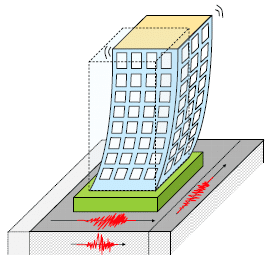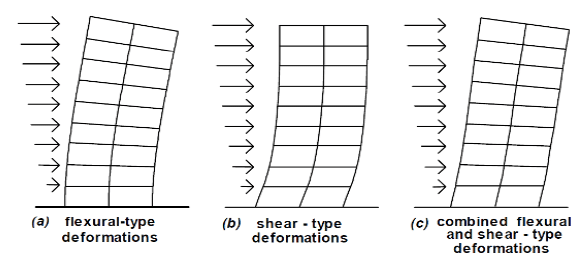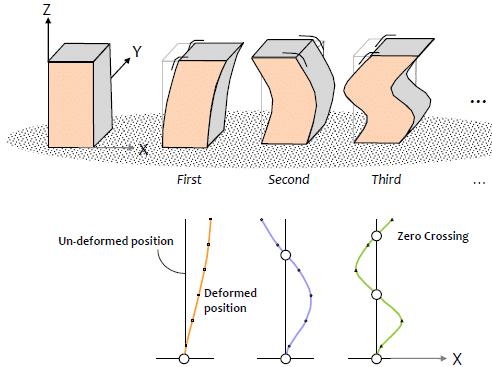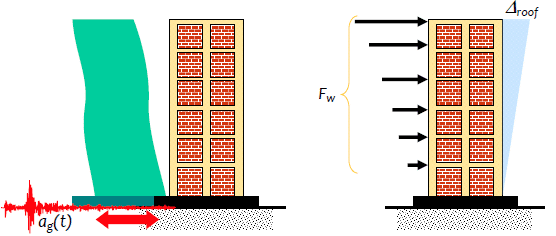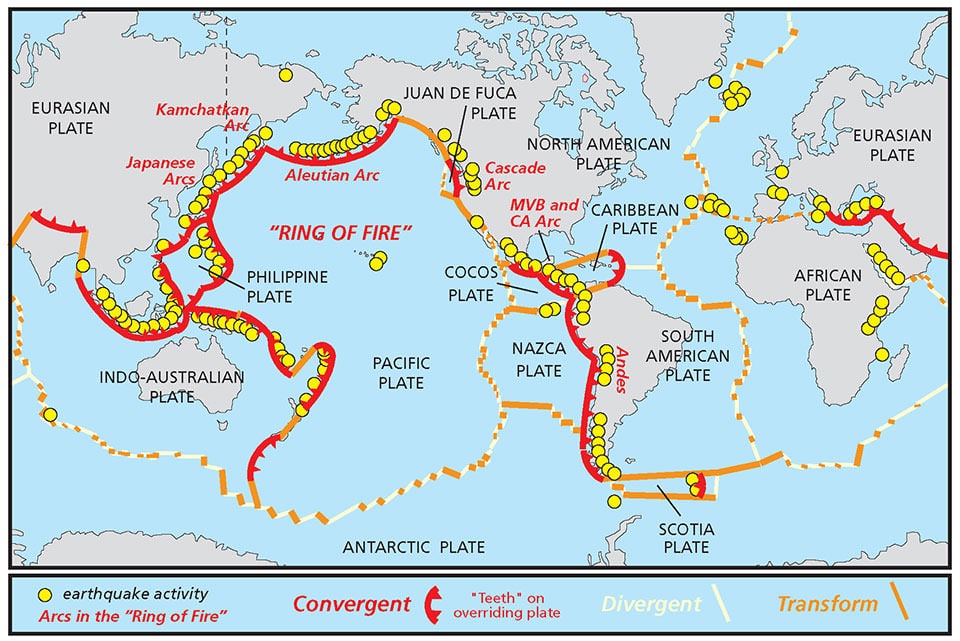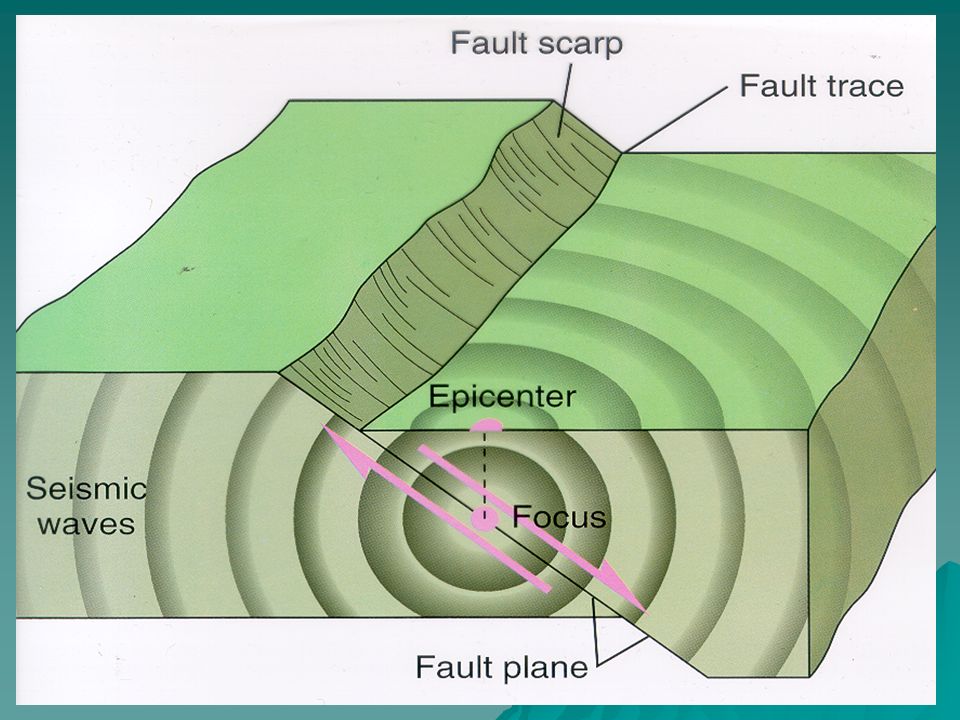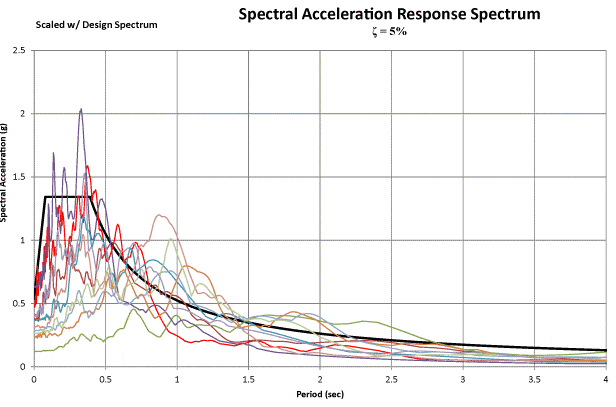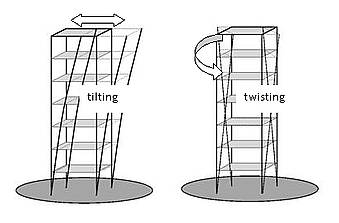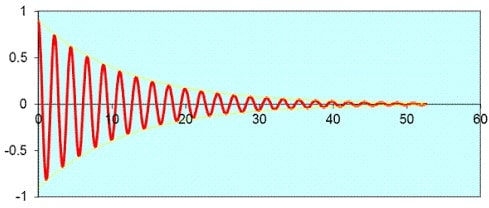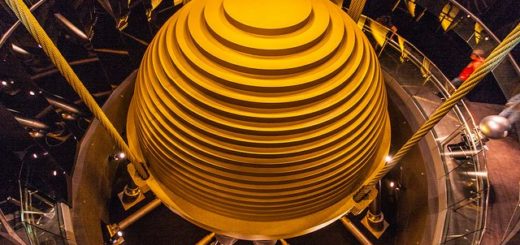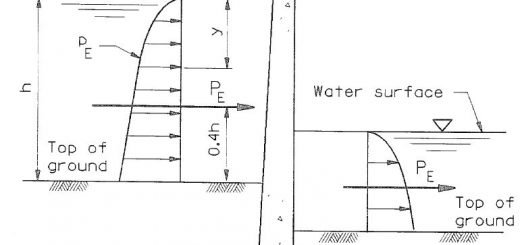Seismic Design [Things to be known]
Seismic design is done for the structure constructed in the areas where there is a possibility of having earthquakes. In addition, important structures such as dams, high-rise buildings, etc. are check/design for earthquakes whether they are close to a plate boundary or not.
What is an earthquake?
Movement of the ground in the vertical and horizontal direction due to a movement between plates, volcanic events, etc.
This movement in the ground directly transfers to the structural system. The structural design concept is the key factor the decided whether this structure can bear the loads applied in this kind of event.
In general, it is alow about capacity and applied load ratio.
What happens in an earthquake?
As discussed previously, the ground movement causes the structures to move in the direction of earthquake waves are moving.
Mostly the waves are in the horizontal direction.
Due to the lateral movement in the ground, it shakes the building. This movement creates two deformations of the structure namely flexure deformation and shear deformation.
Further, the structure subjected to different stages of movements with the shaking. These are called the mode shapes. These fundamental mode shapes are considered in the design.
What is the difference between wind loads and earthquake loads?
Both types of loads cause the structure to vibrate. Further, both types of load can be applied as static or dynamic and proceed with the design.
The main difference between these types of loads is the magnitude and the time frame that they applied to the structure. Further, the variation of the applied loads is not similar in nature.
How does the earthquake occur?
A sudden slip on a fault is called an earthquake.
Techtonic plates are always moving. They struct their edges due to the friction between the two planes. Release of this stress by overcoming the friction is what we feel like an earthquake.
Seismic events are observed at the plate boundaries. The following plate boundaries have been found. Mainly there are seven tectonic plates.
- African Plate
- Antarctic Plate
- Eurasia Plate
- Indu-Australian Plate – [ Australian Plate and Indian Plate ]
- North American Plate
- Pacific Plate
- South American Plate
The movement of the Tiptronic plate can be illustrated in the following figure.
It creates the movement of the ground. Sometimes there is permanent deformation in the ground after an earthquake.
What is the Seismic Design?
Design of structure to withstand the loads applied from an earthquake. The load will be a dynamic type and either dioramic analysis or static analysis can be used for the analysis and designs.
Seismic desing codes provide a comprehensive guide for structural engineers on the parameters to be considered based on the magnitude of the earthquake, type of structure, condition of the ground, etc.
Mainly there are three methods to design a structure.
- Static Analysis
- Response Spectrum Analysis – Dynamic Analysis
- Time History Analysis – Dynamic Analysis
Static Analysis in Seismic Design
The static analysis is the simplest method of doing load calculation and analysis. It is a comparatively simple and easy method.
The following steps are following in the static analysis.
- Select the peak ground acceleration (PGA) of the structure to be designed. This value may be obtained from the local standards or from the international standards based on the seismic zone where the structure is located.
- When the site is far away from a plate boundary, the minimum PGA or value stipulated in the design intent could be used.
- Based on the PGA and other parameters, calculate the based shear.
- In this method, we consider the mass of the structure is lumped at each floor level. The base on the mass of each floor and the height to each floor from the ground, base shear is distributed to each floor.
- Then we can proceed with the analysis in the usual manner.
- However, we have to set the material properties considering their nonlinear effects as we let the structures to behave beyond the linear range in an earthquake.
- Depending on the analysis outcome, design can be done.
The worked example UBC 1997 seismic design example could be referred to for more information on the method to calculate the base shear.
Further, clarification could be made from the article seismic design principles about the background.
In addition, the article performance-based design could be referred to for more information on the nonlinear analysis of structures of this nature.
Response Spectrum Analysis
This is one of the dynamic analysis methods in seismic design. Firstly we need to find the relevant response spectrum suitable for our design.
Further, this is mainly used in building analysis in the seismic design.
The following can be highlighted with reference to response spectrum analysis. – source: internet
- Response spectrum analysis provides the estimate of peak response of a structure provided in the form of displacement, velocity, or acceleration.
- This method is widely used to find the response of the structure in the seismic design.
- Further, this is a method that measures the contribution of each natural period of vibration to indicate the likely maximum seismic response of an essentially elastic structure.
Time History Analysis
Time history analysis also one of the dynamic analysis methods used in the seismic design.
Time history analysis is a linear or nonlinear evaluation of the dynamic response of a structure that subjected to a loading that varying according to a time function.
This function could be related to a previous seismic event.
Important Factors to be Considered in Seismic Design
There are many factors that could be considered when seismic designs are done.
Later deflection or the drifts, damping, ductility detailing, structural configurations, etc. are several important factors that need to look into when structures are desing for earthquake loads.
Lateral Deformations
The most preferred type of deformation is the translational movement. If no torsional modes are not forming within the first two modes, we are happy.
When the torsional modes do not come to the initial modes, the torsional deformation of the structure is minimal.
However, we cannot achieve it always as our structures are not always symmetric. There could be deviations in the center of mass and the stiffness center.
On occasions where we cannot avoid the torsional modes, we have to desing the structure for the torsion. Attention shall be made to the weak element and shear force variation in the structure.
It should always try to avoid the torsional modes within the initial modes by modifying the structural stiffness. Adjustments in the shear wall stiffness, change locations, etc, could be done to overcome this issue.
Story Drift / Drift Index
This is a serviceability requirement of the building and also it is a kind of limitation of lateral deformation of the structure.
Limitations shall be made based on the relevant standard used for the seismic design.
Otherwise, the nonstructural components such as cladding, ceilings, mechanical equipment, etc could damage the excessive lateral deformation.
The limiting value specified in the UBC 1997 and for more information on this subject, the article UBC 1997 seismic design could be referred to.
Damping
Damping is a phenomenon that dissipates the energy of a vibrating object with time. It reduces the amplitude of vibration with time.
The following figure indicates the entry dissipation due to the damping.
The structure itself has a damping capability. The vibration induced by an earthquake be dissipated by the structure itself without any external energy absorbing devices.
However, when the amplitude of vibration is increasing, structures subjected to cracking and loses the damping properties.
In modern construction, there are many methods adopted to improve the comfort level of the buildings by fixing the dampers.
The following methods are adopted to reduce the vibrations in the building in seismic design.
- Viscous dampers
- Viscoelastic dampers
- Friction dampers
- Vibration dampers (Tuned mass dampers)
- Yielding dampers
- Magnetic dampers
These type of damping methods are adopted in high rise buildings. Usually, the small buildings are not equipped with these kinds of systems.
Naturally, the damping properties of small buildings are less and they cannot dissipate their energy by lateral deformations as there are family stiffer for lateral deformations.
Further, the infill walls in these types of structures avoid the same.
Therefore, small buildings subjected to high damage levels due to an earthquake.
Ductility Detailing
It is one of the most widely used methods in construction whether the building is falling into a seismic zone or not.
Even the structure is not design for seismic loads, reinforcement detailing of those structures is done in accordance with ductility detailing requirements.
Further, information on the reinforcement detailing the article seismic detailing of beams and columns could be referred to.
In addition, the article seismic design principles could be read for more information about the ductility of a structure.
Building Configuration
Configuration of the building very important when it comes to seismic design.
Irregular buildings are subjected to torsion due to the deviation of the center of mass and the stiffness. Providing movement joints, modifying the lateral stiffness, introducing shear walls, etc. shall be done to avoid torsional movements.
Lateral load resisting System
The lateral load resisting system carries the horizontal load induced on the building in an earthquake.
Stiffness of the lateral loads resisting elements decides the damage level to the structure.
Further different structural forms could be used for better performance against lateral loads.
Base Isolation
One of the famous methods adopted in modern construction to protect structures against earthquakes.
As we know, there will be very high seismic loads on high-rise buildings which lead to adding significant cost for the lateral load resisting system. Therefore, it was very difficult to build high-rise buildings in an area where there are frequents seismic events.
The use of base isolation methods has made it possible now. Base isolation limits the lateral movement of the building but it does not avoid it. There will be a certain force that the structure needs to be designed.
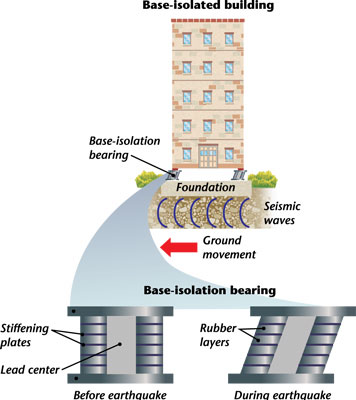
It is required to monitor the condition of the material in the system as it could deteriorate with time. When required they shall be replaced.
In addition, the materials in the base isolator could be replaced after facing an earthquake based on the assessment of the condition of the material.

